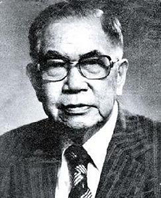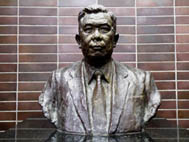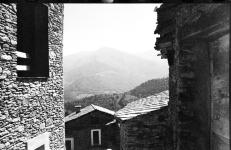|
Haking Halina 160 |
Manufactured or assembled in Hong-Kong from 1986 to (After) 1986.
Index of rarity in France: Infrequent (among non-specialized garage sales)
Inventory number: 11105
See the complete technical specifications
Chronology of cameras Haking
The Haking CF 35 and C 35 are virtually twins. The only thing that sets them apart is the presence of a flash on the CF 35. It is deduced that the "F" in the model name corresponds to the presence of the flash.
These are small entry-level cameras, fixed focus, and without a motor. The only adjustment available is the choice of film sensitivity (CF 35) or weather conditions (C 35). Located in the same position on both models, the slider likely operates solely on the aperture.
The same camera with flash can be found under the names Haking Quick or Halina 160. Other brands have incorporated it into their catalog, such as Hanimex Pix, Carena 35F, Foto-Quelle Revue 150 CF. Depending on the variations, the sensitivity adjustment may or may not allow the use of 1000 ISO film.
Without a flash, it is also referred to as the Revue 100 C, and probably others.

 Haking Wong, Commander of the Order of the British Empire, formerly known as Huang Zuyi, was born in Hong Kong in 1906 and, except for the period of Japanese occupation, spent his entire life in the British colony. He was the son of a wealthy Chinese from Thailand. He lived in Thailand during his childhood and returned to Hong Kong at the age of eleven to study at St. Stephen's College. After graduating from high school, he entered the rubber industry and manufactured thousands of athletic shoes in Kowloon. He later became interested in the emerging field of electronics and became involved in other businesses, including textiles. At one point, Haking's factory in Hong Kong was the world's largest producer of toothbrushes. His activities also extended to the ship repair industry. By the time the war broke out, Mr. Wong was one of Hong Kong's most promising entrepreneurs.
Haking Wong, Commander of the Order of the British Empire, formerly known as Huang Zuyi, was born in Hong Kong in 1906 and, except for the period of Japanese occupation, spent his entire life in the British colony. He was the son of a wealthy Chinese from Thailand. He lived in Thailand during his childhood and returned to Hong Kong at the age of eleven to study at St. Stephen's College. After graduating from high school, he entered the rubber industry and manufactured thousands of athletic shoes in Kowloon. He later became interested in the emerging field of electronics and became involved in other businesses, including textiles. At one point, Haking's factory in Hong Kong was the world's largest producer of toothbrushes. His activities also extended to the ship repair industry. By the time the war broke out, Mr. Wong was one of Hong Kong's most promising entrepreneurs.
In the 1950s, Hong Kong began developing its manufacturing industry. In 1956, Haking Wong and Mrs. Pauline Chan co-founded Baoyuan Foundation Co., Ltd. Over the next five to six years, Haking Wong wanted to find a more competitive and high-tech industry, transitioning from the plastic industry to the manufacture of optical instruments.
In 1957, he produced his first simple camera. At that time, photography was still in a relatively formative state. Since then, technology in camera production has made significant progress. Haking Wong became the Henry Ford of Hong Kong in the world of optics. Yet, he was over fifty years old when he made this leap into the dark—or perhaps we could more accurately say into the darkroom. His specialty was the production of cameras with integrated electronic flash in the 110 and 135 formats. He made improvements to shutters, prisms, and lens coatings. He also ventured into manufacturing binoculars. Technology that was once the preserve of West Germans and the Japanese was no longer so. In 1972, the company employed 5000 workers in 9 factories in Hong Kong, 3 in Macao, and one in Taiwan. At that time, it was the largest producer of binoculars. Haking also produced cassette tape recorders.
Because Haking Wong was a pioneer in the manufacture of optical instruments such as cameras and telescopes in Hong Kong, he later became known as the king of optical instruments.
 At the same time, he was a passionate philanthropist for education and public welfare. In 1977, he made a donation to establish the Haking Wong Institute of Technology, now renamed the Hong Kong Institute of Vocational Education, and in 1983, he funded the construction of the Haking Wong Building at the University of Hong Kong. In addition to Hong Kong, Haking Wong also invested in the construction of the Haking Wong Bridge in Xinhui (1992).
At the same time, he was a passionate philanthropist for education and public welfare. In 1977, he made a donation to establish the Haking Wong Institute of Technology, now renamed the Hong Kong Institute of Vocational Education, and in 1983, he funded the construction of the Haking Wong Building at the University of Hong Kong. In addition to Hong Kong, Haking Wong also invested in the construction of the Haking Wong Bridge in Xinhui (1992).
Haking Wong held several titles in his life, such as President of the Hong Kong Chinese Manufacturers' Association. Haking Wong was decorated with the Order of the British Empire in 1968 and received an honorary Doctor of Laws degree from the University of Hong Kong in 1980.
Haking Wong had three wives and a total of eleven children. After his death in 1996, his family members repeatedly made headlines due to financial conflicts and lawsuits. In December 2000, three of his sons filed a petition with the High Court to request the liquidation of the Baoyuan Foundation, ultimately leading to the company's exile to China. In 2002, Titan Continental Ltd purchased over 70% of the shares of Baoyuan Foundation and removed the family descendants from the board of directors.
Since 1957, Haking has been the only local company to successfully produce cameras and binoculars. While the company's name comes from Haking's personal name, the early cameras were named Paulette, derived from the name of his co-founder associate, Pauline Chan.
Interesting links or bibliography :
Add a link or element of bibliography, a picture taken with this camera, a picture of box or an ads about this camera
Your photos taken with the same camera:
Cameras from Ebay France (Haking) (Uploaded each 3 hours)
 appareil photo Haking Disc 5,00 euros Finira le 28-04-2024 à 20:31:48 |  Appareil PHOTO de marque HAKING CF 35. RARE EN FRANCE 45,00 euros Finira le 03-05-2024 à 12:02:36 |








